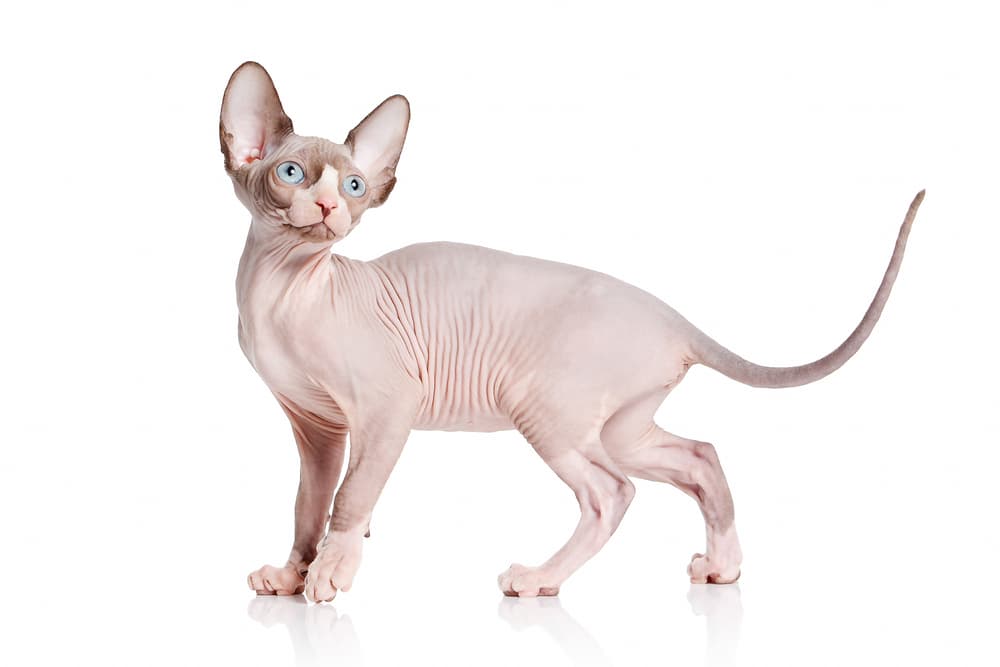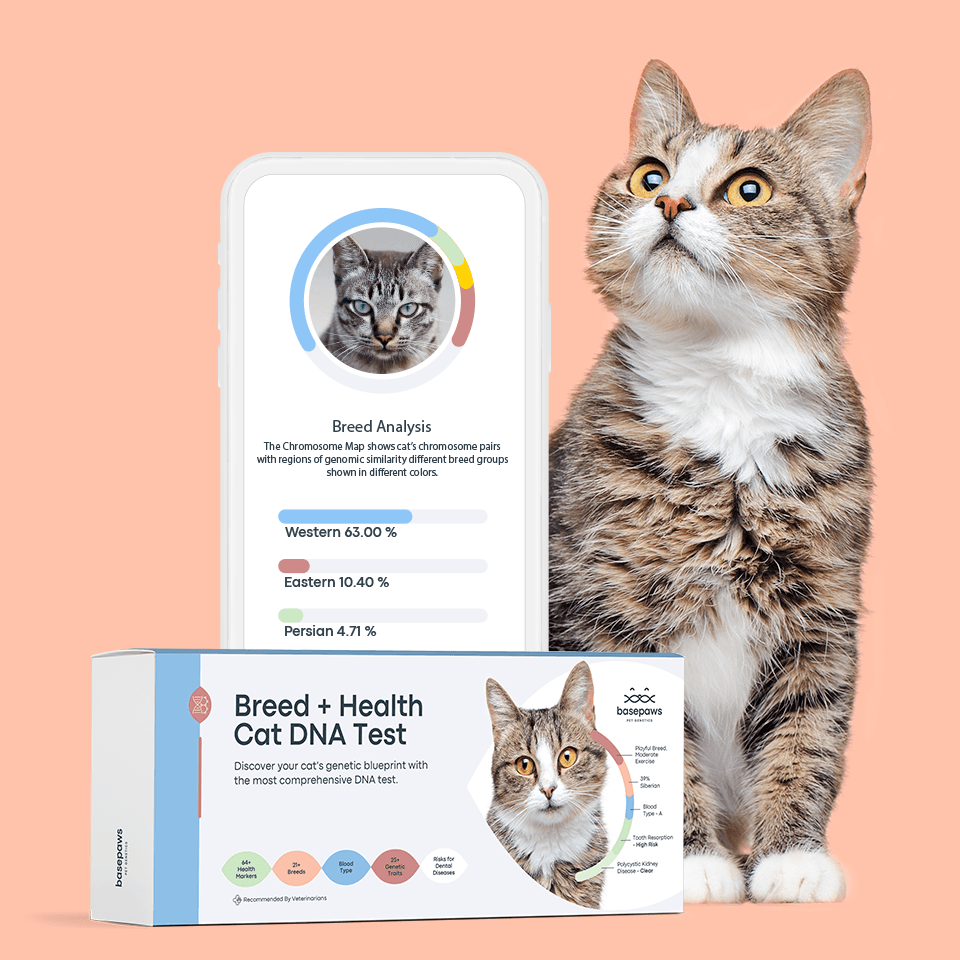Discover your cat's connection to this breed and 20 others


Discover your cat's connection to this breed and 20 others



Hairless but fearless, the Sphynx cat turns heads everywhere it goes! This cat demands its well-deserved attention, loves entertaining its family, and treasures meeting new humans. The Sphynx have an undeniable power to enchant anyone with their humor, loving nature, and exotic appearance.
The curious Sphynx is a medium-sized cat that typically weighs from 6 to 12 pounds. They are without fur and have a smooth, muscular body is covered in very fine hairs. This gives them a
bald and wrinkled appearance and chamois-like texture. Their head is wedge-shaped, with prominent cheekbones, large ears and distinctive, lemon-shaped eyes. The charm of their unique appearance includes noticeably thicker paw pads in comparison to other cat breeds.
The Sphynx comes in all colors and patterns. They can be solid (white, black, red, brown, lavender) or patterned (bicolor, calico, tabby, tortoiseshell, pointed and mink). The color and pattern is seen in the pigment of their skin, which can make it a bit more difficult to distinguish from how color presents in cats with coats.
Sphynx cats originally come from Canada and they came about completely accidentally. One of the first ancestors to the popular breed was Prune, a hairless kitten born in 1966 in Toronto to a black and white domestic cat Elizabeth. Prune's hairlessness was the result of a natural, recessive mutation. Elizabeth’s owner recognized the uniqueness of the kitten and was set to reproduce him. Along with other hairless cats found across the globe, Prune was bred to cats with normal coats and then back to hairless cats to create a large gene pool. This way, breeders could ensure that the new breed would be affected by fewer inherited genetic health conditions.
Sphynx are very outgoing, energetic, and intelligent. They will cherish your companionship, but also the companionship of other cats and dogs. In fact, they are so friendly that they were rated as the most affectionate cat breed in a study conducted by Asselineau and Abitbol in 2012! The Sphynx isn't shy and won’t hesitate to demand your attention. Their sweet-nature is accompanied with a great sense of humor, too! They will always find a new way to entertain you. They are highly playful, and will engage in many activities around the house to keep entertained. And when they’re not on the go, they love cuddling and resting on your lap. Sphynx cats serve as excellent therapy pets because of their warm nature and genuine love of meeting new people.
The Sphynx don’t have a lot of inherited conditions, but they may be genetically prone to hypertrophic cardiomyopathy (HCM). They also struggle with skin complications due to the lack of coat. They are prone to urticaria pigmentosa (a skin disease causing crusty sores on the body) and are at the higher risk from skin cancer. This is why it is important to monitor their exposure to sunlight. The lack of fur also makes it difficult for them to maintain body temperature, which is why it’s not a bad idea to invest in a few sweaters for your little Sphynx.
Although hairless, your Sphynx will require just as much grooming as a longhaired Ragdoll, if not more. Their skin needs to be kept moisturized and they will require weekly baths. Every cat’s skin produces oils which help keep their coat sleek. The Sphynx, however, don’t have fur to absorb these oils. This is why it is recommended to give them weekly baths with gentle, baby soap. Baby wipes can be used to help keep their skin clean in between baths. If you start bathing your Sphynx as a kitten, they will often learn to tolerate or even enjoy their bathing sessions!
There are a few theories explaining why Sphynx cats are exceptionally friendly. It is possible that the breed is so affectionate because the kittens are generally kept with the Queen for longer periods of time than other cat breeds or because the friendlier cats are more likely to be selected for breeding. Other experts believe that they are affectionate because they rely on us to keep warm.
They eat more than an average cat. This is because the Sphynx has a very fast metabolism and needs more food to fuel its high energy antics and playfulness.
They are not actually hypoallergenic. Interestingly, despite what many believe, Sphynx cats are not hypoallergenic. They produce an allergen in their saliva called Feld d1, just like all cats with coats. This is the main allergen responsible for cat allergies in humans.
They have coat genetics in common with the Devon rex. The recessive allele that produces the hairlessness in Sphynx was identified to be from the same gene that produces the hairlessness in Devon rex. The allele found in Sphynx (hr) is incompletely dominant over the allele found in Devon rex (re), but they are both recessive to wild type (allele that produces a normal coat). However, new hairless breeds such as Peterbald and Don Sphynx arose from their own spontaneous mutations.
Ted Nude-Gent may be the world’s most famous Sphynx. Ted Nude-Gent, feline star of the Austin Powers movies, is considered to be one of the world’s most famous Sphynx cats. In 1997, Ted portrayed Dr. Evil’s Persian cat, Mr.Bigglesworth, after they have both gone permanently bald due to being cryogenically frozen. Thus Mr. Bigglesworth transformation from Persian to Sphynx. Ted also portrayed Mrs. Whiskerson, Rachel Green’s Sphynx cat in the popular sitcom Friends, and appeared in Lindsay Lohan thriller, I know who killed me too.
The International Cat Association (TICA) “Introduction to the Sphynx”
Recommended by top vets with decades of experience
21 breeds
64 genetic health markers
50 genetic trait markers
